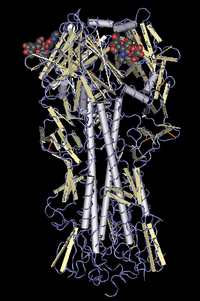Looking at the ducks in NoCal

Bay City News Wire
TESTERS GATHER TO LOOK FOR BIRDS WITH H5N1 FLU VIRUS
11/16/06 11:30 PST
As part of an ongoing effort to test wild birds for the deadly avian influenza subtype H5N1, biologists from the California Department of Fish and Game and other government agencies came together this morning to catch and test wild birds in the Yolo Bypass Wildlife Area, outside Davis.
The area is a vibrant and favorite habitat for pintail ducks, which migrate along the Pacific Flyway, an extensive series of avian migration paths that run through California to Alaska and Siberia, said Patrick Foy, spokesman for the state Department of Fish and Game.
Birds that travel through California mix with birds from Asia in both Alaska and Asia, he said.
H5N1 hasn't been found in any of the 2,500 birds tested in California this year, nor elsewhere in North America, and today's efforts, which target pintail ducks, come as the department winds down a wild bird testing program that has been in effect since January.
Many birds, and ducks in particular, can carry the virus but not show symptoms, he said.
Staff from the Department of Fish and Game take one fecal sample from a bird, which is not tracked after testing, he said. Laboratories then first look for the H5 virus and, if those tests are positive, follow up with more tests for H5N1. Birds typically carry lots of viruses, he said.
The brown and white pintail ducks, which have a pointed tail, are caught by swimming into baited, passive traps or with rocket nets, which are blasted over the top of a flock of ducks settled on the water.
With the rocket nets, "if you're lucky you can catch 100 birds at a time,'' Foy said, adding that catching the birds can still be a real hit or miss operation.
Test results are available within a couple of weeks after the birds are sampled, Foy said. There is no particular cause for concern about the H5N1 virus in this round of testing, he said.
















